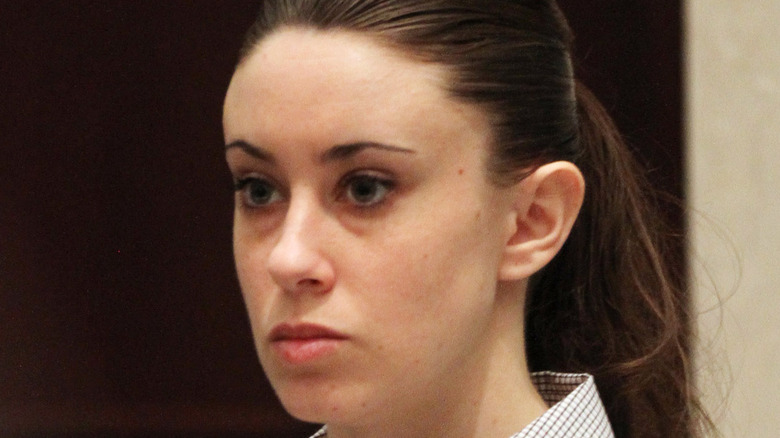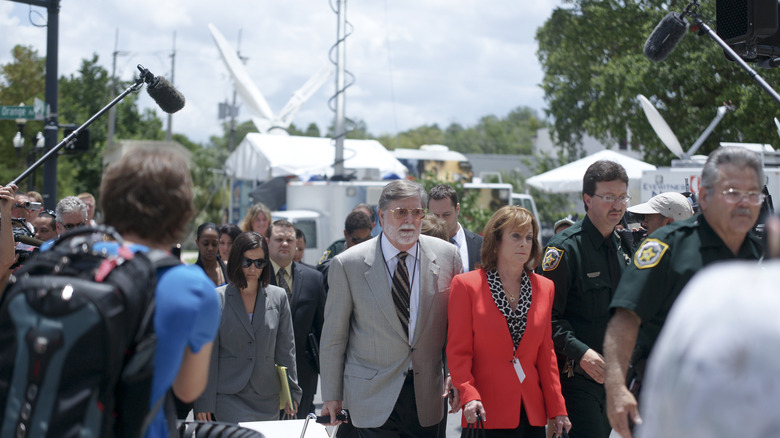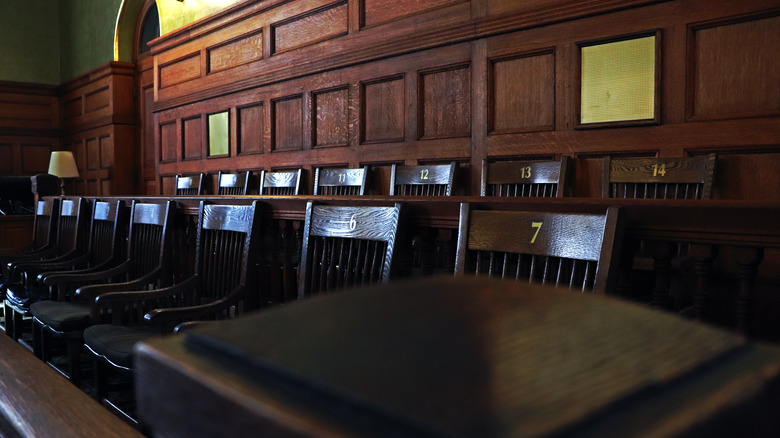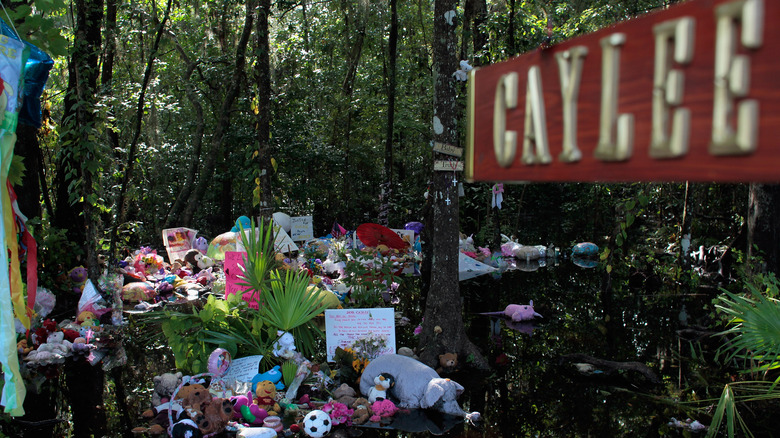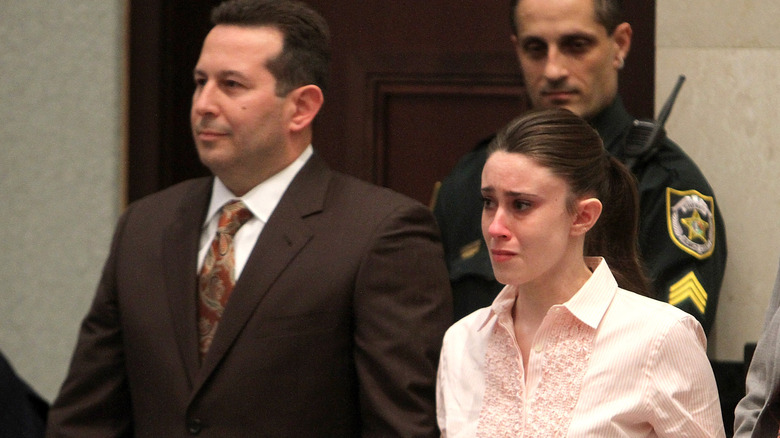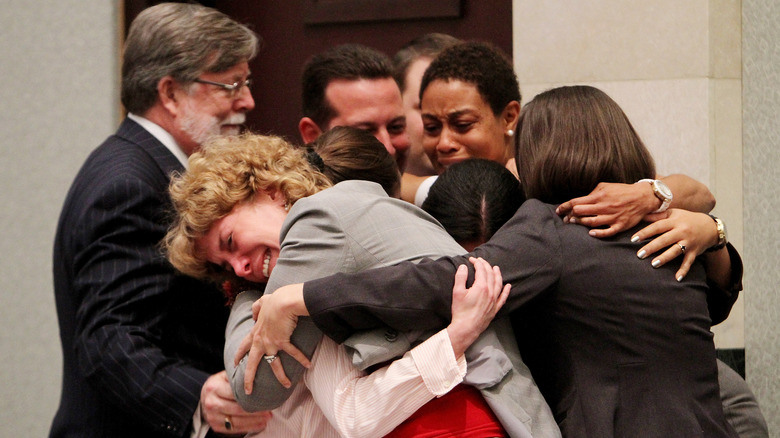What It Was Like Serving On The Casey Anthony Jury
Casey Anthony is an Orlando woman who was accused of killing her 2-year-old daughter, Caylee, in 2008 after Anthony's mother reported her granddaughter missing in July that year. While the location of the toddler was unknown, it was Anthony's reported behavior that really captivated the public's interest in the case, as many found her story hard to believe. Later, police investigations would show that the 22-year-old was a chronic liar.
According to what Anthony told police, she'd left Caylee with a babysitter named Zenaida Fernandez-Gonzalez and the woman had disappeared, per CNN. Caylee had been missing for 31 days by the time police were notified, which immediately raised suspicions. What's more, photos surfaced that showed Anthony partying and looking happy and carefree during the month her daughter was missing.
Investigators eventually learned that Anthony lied about the babysitter, and as the investigation continued, it turned out Anthony lied about many other things. She was initially charged that July with giving false statements, obstruction, and child neglect, a different CNN piece reported.
The search for Caylee went on for months and by October Anthony was indicted and accused of killing her daughter even though Caylee's whereabouts were still unknown. Then in December of 2008, skeletal remains were found in a wooded area not far from the Anthony home and identified as being little Caylee Anthony.
The jurors in the Casey Anthony case were uprooted from their lives
Because the Casey Anthony story was already so high profile by the time the young mother was put on trial in 2011, the presiding judge decided to keep the trial in Orlando, where the alleged crime had happened, but to bring a jury in from 100 miles away in Clearwater, Florida, according to The New York Times. That way, they hoped, they could find jurors who were not as informed about the case and could keep an open mind.
Prospective jurors would also be sequestered during the trial. They were to be put up in hotels about a two-hour drive from their homes, and family could go visit them on the weekends. Beyond their physical sequesters, The New York Times also reported that the jurors had to give up their cell phones and the internet to keep from being influenced by news reports and social media regarding Anthony's guilt or innocence. They could use landlines to make calls, and watch TV in their hotel rooms but all news stations would be blocked.
People reported that in the end the jury was made up of seven women and five men — plus five alternates. They heard 91 people testify and were shown more than 400 pieces of evidence during the 33 days of the trial.
These are the jurors
One thing all the jurors had in common was that they said they could be open to recommending the death penalty, though most were hesitant about having to do so, and it would greatly depend on the facts of the case they said, according to the Orlando Sentinel. Only one woman, Juror 12, said she supports the death penalty wholeheartedly — a 10 on a scale of one to 10.
The jurors in the Casey Anthony case ranged in age from their early 30s into their late 60s and included Black and white men and women. There were teachers, retirees, a nursing student, a chef, and a retired nurses' aide. Two people worked for Verizon, another did odd jobs. One woman worked as a cook at Publix. Some were married, some were divorced, others never married. Two jurors didn't own computers, about half were parents, but most were not yet grandparents.
The jurors were not allowed to talk to each other about the case
According to what one of the male jurors told People 10 years after the case, the jurors could eat dinner together but were forbidden from discussing the case until the judge told them it was time to deliberate. According to that juror they had heard so much from each side and it was so heavy, it was difficult not to discuss it.
That juror told People, "By the time both sides had finished their statements, I had no idea what to believe. We weren't allowed to talk about it with each other, so we were making small talk at dinner, but there was this big unspoken cloud over us based on what we had just heard. We all sat around that night, and it was killing us not to talk. We just gave each other these long looks. But no one said a word."
What the jury heard was two versions of what happened to Caylee. The prosecution claimed that Anthony smothered Caylee by putting duct tape over her mouth so she could go out and party. After the child died, she put her little body in the trunk of her car before stashing it in the woods near her family home.
The defense claimed that Caylee had accidentally drowned in her grandparents swimming pool, and Anthony's father had molested Casey since she was 8, and he was the one who hid the body, per CNN.
The facts of the case were so muddied it created reasonable doubt
In the end, with two very different arguments about what happened to Caylee Anthony, the jury had to make a decision. According to what medical examiner Dr. Jan Garavaglia testified in court, because of the level of decomposition of the 2-year-old's body by the time it was found nearly six months after Caylee was last seen alive, the only thing that was an obvious cause of the child's death was that duct tape was wrapped around her head, nose and mouth three times, NBC News reported.
For the jury, that wasn't enough to prove that Casey Anthony killed her daughter. In 2011 an Anthony case juror, Jennifer Ford, then a 32-year-old nursing student, spoke to ABC News about the evidence presented and how they had to make their decision on the cold hard facts and not the speculation or conjecture being offered up by the defense and the prosecution.
Ford told ABC News she didn't believe the defense's story, yet there were too many unanswered questions in the prosecution's claims of how Caylee was killed.
"If there was a dead child in that trunk, does that prove how she died?," Ford said. "No idea. Still no idea. If you're going to charge someone with murder, don't you have to know how they killed someone or why they might have killed someone, or have something where, when, why, how? Those are important questions. They were not answered."
The jury found Casey Anthony not guilty
The jury in the Casey Anthony case deliberated for 11 hours over two days, according to the Associated Press. They found her not guilty of first-degree murder, but guilty of four counts of lying to law enforcement as they were working to find Caylee. The decision sent shockwaves through the media and among millions who followed the televised case. Even members of the jury later said they couldn't believe they had to let her go.
A male juror told People in 2011 of the decision, "And then we sat there for a few minutes and were like, 'Holy crap, we are letting her go free. Everyone was just stunned at what we were about to do. [Another juror] asked me, 'Are you okay with this?' and I said, 'Hell, no. But what else can we do? We promised to follow the law."
That juror also told People 10 years after the verdict, "My decision haunts me to this day." He said he didn't stand up for what he believed in and wished he would've pushed harder for some kind of lesser conviction like child abuse or aggravated manslaughter.
According to The New York Times, Casey Anthony was sentenced to four years in prison for lying to investigators, but after her sentencing she was freed in just a couple of weeks since she'd already spent almost three years in jail awaiting trial and during the trial. She had also earned credit for good behavior.
